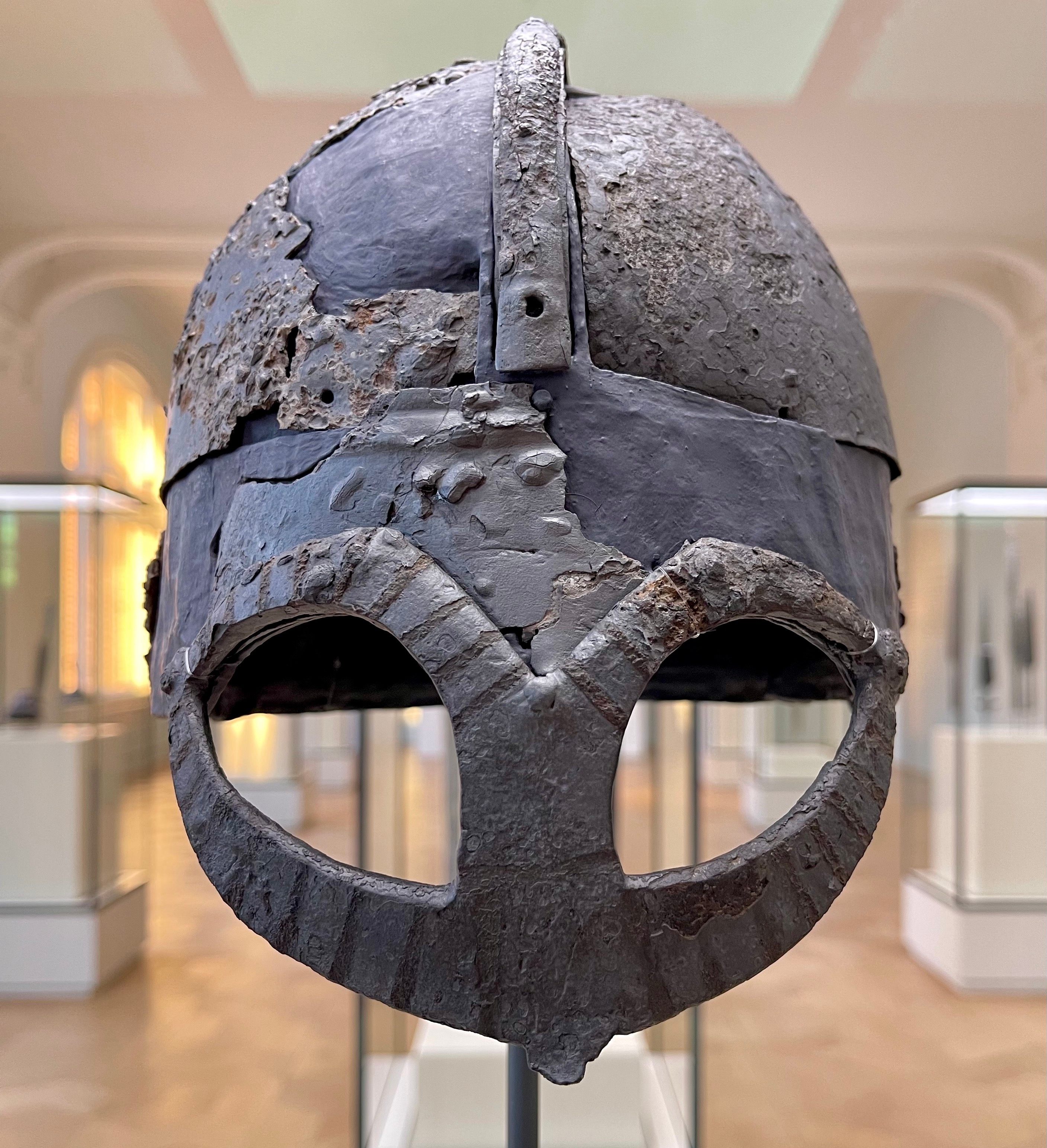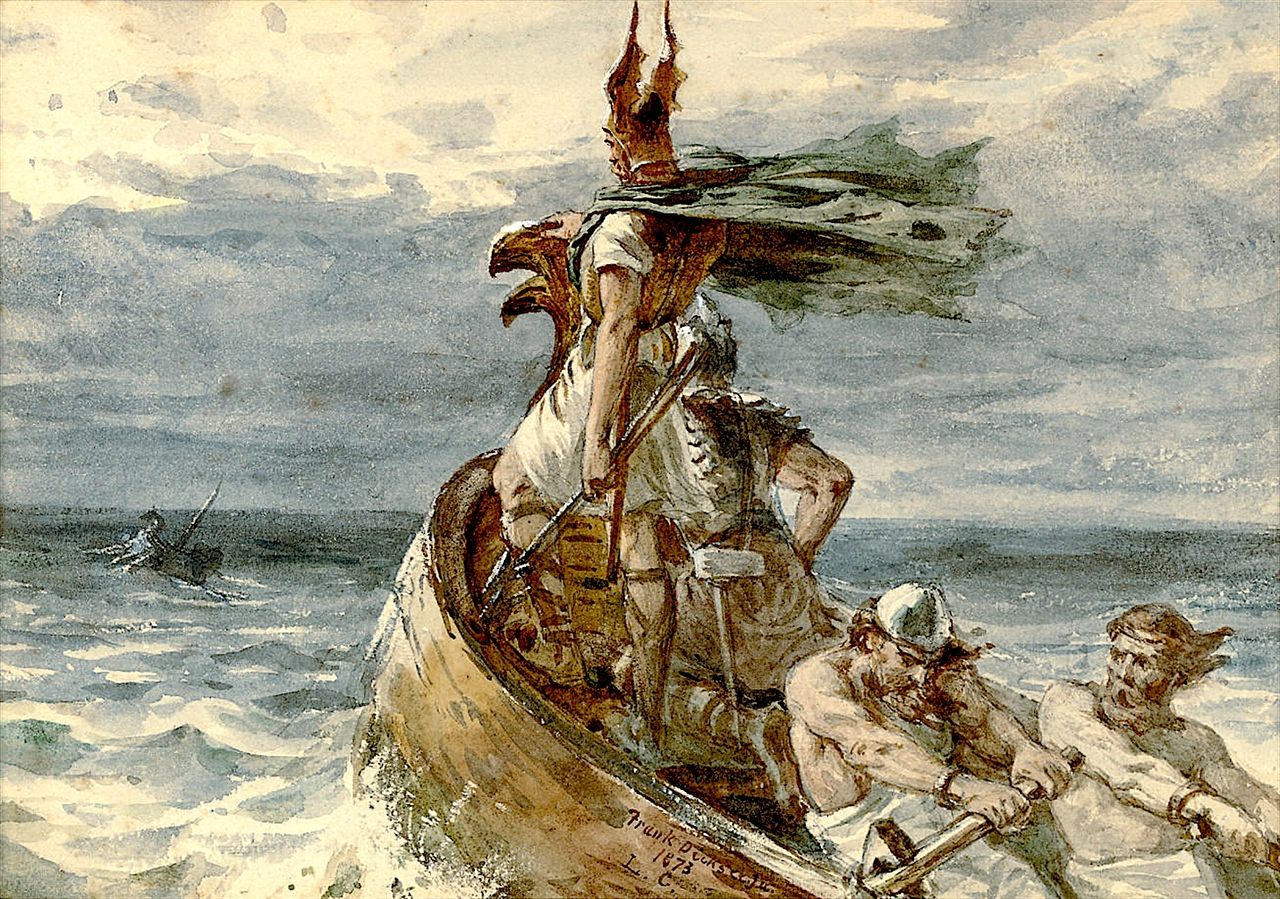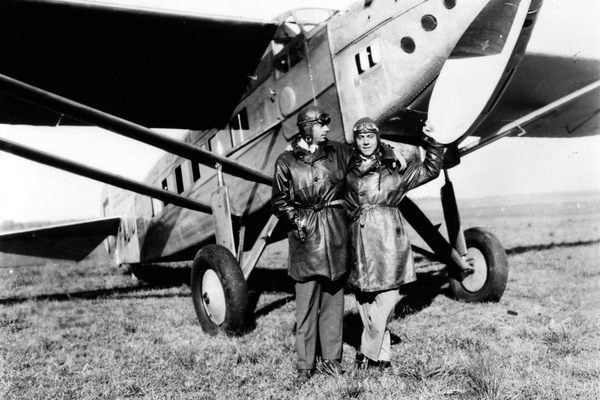The Muddled Origins of the Word ‘Viking’
The now common term wasn’t used to describe medieval Scandinavians until the 19th century.
Excerpted and adapted with permission from American Vikings: How the Norse Sailed into the Lands and Imaginations of America by Martyn Whittock, published November 7, 2023 by Pegasus Books. All rights reserved.
Beginning in the eighth century, raiders exploded out of Scandinavia in a way that shocked their contemporaries in Western Europe.
Their victims used various names for their attackers from the north. In Anglo-Saxon (Old English) writings the terms “Danes,” “Northmen,” “pagans,” or “heathens” were the ones most often used. But one term, “viking,” is resoundingly absent.
What is surprising is that the term “Danes” did not carry much geographical accuracy in these mentions. As a result, when we find the word in the accounts of a particular Viking raid we cannot be sure that those responsible came from Denmark.
This sounds bizarre but an example will illustrate the point. In 789, after reporting a raid on Portland, Dorset, in southwest England, the same entry in a chronicle says that those responsible were Danes—and that they came from Norway! Clearly, a label could get detached from geography.
Many other labels were also used to describe these ferocious northern raiders. The Franks, in what is now France and western Germany, called them the Nordmanni, or “Northmen.” As a result, an area ceded to them in the 10th century would become Normandy, “Land of the Northmen.”

Some have suggested that Slavs in Eastern Europe knew them from their ruddy complexions as the Rus, meaning “red.” Or this name may have been derived from an Old Norse word for “rowers” or “seamen.” (Old Norse is basically an umbrella term to describe languages spoken in Scandinavia in the early Middle Ages.) Or perhaps the Rus label came from a coastal area of Sweden called Roslagen.
The word eventually gave rise to the national names of Russia and Belarus. This is because the roots of the historic Russian nation started as a mixed Viking-Slav state centered around Kyiv in Ukraine.
A related word, Rhos, was used in the Byzantine Empire (ruled from Constantinople, modern-day Istanbul, Turkey), whose rulers employed the Scandinavians as mercenaries. The northern sailors had traveled down the rivers leading from the Baltic Sea and, eventually, sailed into the Black Sea. From there, they traveled into the eastern Mediterranean and the Byzantine Empire, where they found their fighting skills could earn a pretty penny.
The Byzantines also called them Varangians, or “those who swear loyalty,” and the mercenaries of the Varangian Guard served the Byzantine emperor in Istanbul. In Istanbul’s Hagia Sophia, one of them carved a runic inscription that reads “Halfdan carved these runes” or “Halfdan was here” into the white marble parapet surrounding the balcony of the upper gallery of the church.
In Ireland, they were the Northmen again (Lochlannach in Irish), a designation similar to the one used by the Franks. For reasons that are obscure, the Irish went on to differentiate the Norwegians as Finn-gaill (white foreigners) and the Danes as Dubb-gaill (black foreigners).
Far from Scandinavia, Islamic writers called them Al-madjus (heathens), in a religiously derived label similar to that used by Anglo-Saxons, adding “May Allah curse them.” And, yes, Scandinavians reached the Islamic lands which stretched from the Iberian Peninsula to the Middle East, and beyond to the Caspian Sea.

What is surprising to the modern reader is the fact that we hardly ever hear them called Vikings outside of Scandinavia at the time. Although several possible origins have been proposed, we have no definite answer to the question of where the now-familiar term came from.
In Old Icelandic (a variant of Old Norse), the word vik (meaning “bay” or “creek”) may have been used to describe seamen hiding in, or sailing from, coastal, Scandinavian inlets. This would have been an understandable label, whether it was meant as the neutral sailor or the more rakish pirate. In this way, a geographical term may have become a group name.
An area of southern Norway was called Vik, so another label rooted in geography may have become attached to those sailing from this area. On the other hand, the Old Icelandic verb vikja, meaning “moving” or “turning aside,” may have come to describe seafarers who were always “on the move.”
These possibilities are rooted in geographical origins, but occupation may also have been in the mix when it came to the definition as it developed. Later Old Norse Scandinavian written sources call a raider a vikingr and a raiding expedition of such people a viking. For Scandinavians, the word “viking” is something you did rather than what you were.
For many who were described in this way (including female Viking warriors), this would have been a part-time occupation. At other times of the year, or during other phases of their lives, they would not have gone out “viking” or been considered Vikings. Then they would have been farming and trading. Viking as a part-time activity—a kind of medieval job-share—is not how we have come to understand the term today.
For the Scandinavians who used the term, “going viking” did not carry a negative connotation. In Old Norse sources, going out viking was an adventure, taking part in a spot of muscular free enterprise.
However, those on the receiving end of a Scandinavian raid viewed things very differently. It is not surprising that the victims of the Vikings coined their own terms—and these were often not positive or complimentary.
Even the red-faced foreigners of Slavic and Byzantine accounts suggest a sense of an alien “other.” Although, as we have seen, more neutral geographical terms were also used (Danes, Northmen), even when these were usually deployed in the context of a generally negative account. For those who were on the receiving end of Scandinavian raids, there was definitely no romantic notion of the Vikings.
Viking names, such as Thorfinn Skull-splitter, a 10th-century Earl of Orkney, reveal that the Vikings themselves reveled in their own violent reputations and warrior prowess. As one historian wryly put it, regarding a 10th-century Viking king of York: “He wasn’t called Eric Bloodaxe because he was good with the children.”
So, given all these alternatives, when did the term “viking” come into English usage?
Old English—the language spoken by Anglo-Saxons in England before the country was conquered by the Normans in 1066—had a similar word for such raiders. The Old English form wicing or wicingas was derived from the Old Norse word—but does not appear as a label for Scandinavian pirates until the 10th century. And it was only used rarely—but, when used, it had a negative connotation.

Yet, some English east coast place names contain the word “viking.” In these cases, it may have been derived from a Scandinavian personal name. If so, we are back to a more positive spin on the label, since the person in question almost certainly carried the name with pride. As in, “I am an adventurer,” rather than, “My employment is smash-and-grab…and worse.”
However, that positivity is not surprising, given that the person in question in these cases was almost certainly a Scandinavian settler who had come to England to take land. Examples include Wickenby (modern Lincolnshire), which means “Viking’s by” or “Viking’s village,” Wiganthorpe (modern Yorkshire), which means “Viking’s thorp” or “Viking’s dependent farm,” and Wigston (modern Leicestershire), which means “Viking’s tun” or “Viking’s village.”
After this far from common use in Old English, the word did not surface again until almost a millennium later when, during the 19th century, it finally became the standard term for medieval Scandinavian invaders. That is a long time out of use, given that today it is so frequently deployed.
In fact, its modern spelling, viking, is not recorded before 1840. Since then, it has come to describe those involved in raiding expeditions, as Scandinavians originally used the term, and Scandinavians generally during the Viking Age, a usage never deployed in the past.
However, it is now so popular that it is the label of choice for most people. Nevertheless, we need to remember that few of those meeting the original Vikings would have recognized the term; and, most strikingly, Scandinavian merchants and settlers would not have thought that it applied to them, since it was not what they did. However, Vikings is now the go-to label, such is the strange history of language.























Follow us on Twitter to get the latest on the world's hidden wonders.
Like us on Facebook to get the latest on the world's hidden wonders.
Follow us on Twitter Like us on Facebook